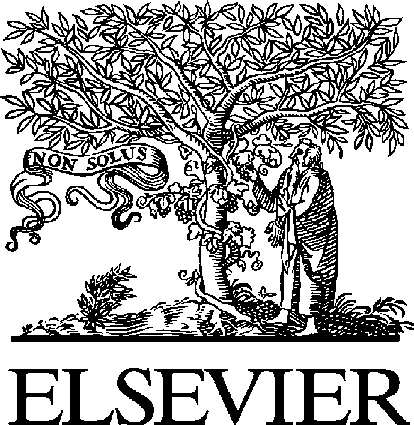A1192-1197.qxd
Das Noonan-Syndrom Gregor Schlüter1, Malte Rossius1, Armin Wessel2, Barbara Zoll1 Zusammenfassung tyrosin-Phosphorylase, die eine zentrale Regu- that are set low and rotated posteriorly, steno- latorfunktion in fast allen Signaltransduktions- sis of the pulmonal valve and short stature. Das Noonan-Syndrom ist ein Dysmorphie-Syn- wegen von Wachstumsfaktoren ausübt. Diese

 Design strategies for anti-amyloid agentsJody M MasonÃ, Nicoleta KokkoniÃ, Kelvin Stotty and Andrew J DoigÃyz
Numerous diseases have been linked to a common pathogenic
example, a 37-residue peptide called islet amyloid poly-
process called amyloidosis, whereby proteins or peptides clump
peptide (IAPP, also known as amylin) aggregates to form
together in the brain or body to form toxic soluble oligomers and/
insoluble amyloid fibres in the islet cells of the pancreas,
or insoluble fibres. An attractive strategy to develop therapies for
which contain the b cells that produce insulin The
these diseases is therefore to inhibit or reverse protein/peptide
role of amyloidosis in AD has been a topic of intense
aggregation. A diverse range of small organic ligands have been
debate because the distribution of amyloid plaque in the
found to act as aggregation inhibitors. Alternatively, the wild-type
brain tends to correlate rather poorly with the specific
peptide can be derivatised so that it still binds to the amyloid
regions of the brain that are actually affected by the
target, but prevents further aggregation. This can be achieved by
disease, leading some to believe that amyloid plaques
adding a bulky group or charged amino acid to either end of the
might simply form as a downstream effect of the disease
peptide, or by incorporating proline residues or N-methylated
or may even help to protect against the real cause of the
disease, rather than actually cause it . A resolution tothese anomalies may be that the soluble oligomeric form
of the amyloid is the principal pathogenic form, rather
ÃDepartment of Biomolecular Sciences, UMIST, PO Box 88,
Manchester M60 1QD, UKySenexis Limited, Department of Biomolecular Sciences, UMIST,
Alternative strategies to treat amyloidosis
PO Box 88, Manchester M60 1QD, UKze-mail: andrew.doig@umist.ac.uk
Numerous groups are developing treatments designedto block various key steps in the amyloidosis process.
Design strategies for anti-amyloid agentsJody M MasonÃ, Nicoleta KokkoniÃ, Kelvin Stotty and Andrew J DoigÃyz
Numerous diseases have been linked to a common pathogenic
example, a 37-residue peptide called islet amyloid poly-
process called amyloidosis, whereby proteins or peptides clump
peptide (IAPP, also known as amylin) aggregates to form
together in the brain or body to form toxic soluble oligomers and/
insoluble amyloid fibres in the islet cells of the pancreas,
or insoluble fibres. An attractive strategy to develop therapies for
which contain the b cells that produce insulin The
these diseases is therefore to inhibit or reverse protein/peptide
role of amyloidosis in AD has been a topic of intense
aggregation. A diverse range of small organic ligands have been
debate because the distribution of amyloid plaque in the
found to act as aggregation inhibitors. Alternatively, the wild-type
brain tends to correlate rather poorly with the specific
peptide can be derivatised so that it still binds to the amyloid
regions of the brain that are actually affected by the
target, but prevents further aggregation. This can be achieved by
disease, leading some to believe that amyloid plaques
adding a bulky group or charged amino acid to either end of the
might simply form as a downstream effect of the disease
peptide, or by incorporating proline residues or N-methylated
or may even help to protect against the real cause of the
disease, rather than actually cause it . A resolution tothese anomalies may be that the soluble oligomeric form
of the amyloid is the principal pathogenic form, rather
ÃDepartment of Biomolecular Sciences, UMIST, PO Box 88,
Manchester M60 1QD, UKySenexis Limited, Department of Biomolecular Sciences, UMIST,
Alternative strategies to treat amyloidosis
PO Box 88, Manchester M60 1QD, UKze-mail: andrew.doig@umist.ac.uk
Numerous groups are developing treatments designedto block various key steps in the amyloidosis process. Alternative therapeutic strategies to block amyloidosis.
Alternative therapeutic strategies to block amyloidosis.

 Free peptides associate asextended β strands with twosticky edges to form β sheet
Mechanism of peptide aggregation in amyloidosis.
Free peptides associate asextended β strands with twosticky edges to form β sheet
Mechanism of peptide aggregation in amyloidosis. Examples of ‘small-molecule’ peptide aggregation inhibitors. HMP, hexadecyl-N-methylpiperidinium.
Examples of ‘small-molecule’ peptide aggregation inhibitors. HMP, hexadecyl-N-methylpiperidinium.






 Inhibition of amyloidosis by synthetic peptide derivatives. (i) Proline introduced as b-sheet breaker. (ii) Terminal blocking group [e.g. cholyl or poly(lys)].
Inhibition of amyloidosis by synthetic peptide derivatives. (i) Proline introduced as b-sheet breaker. (ii) Terminal blocking group [e.g. cholyl or poly(lys)]. implications for Huntington’s disease therapy. Proc Natl AcadSci USA 2000, 97:6739-6744.
implications for Huntington’s disease therapy. Proc Natl AcadSci USA 2000, 97:6739-6744. response. These findings are of great interest as they provide the basis for
45. Lowe TL, Strzelec A, Kiessling LL, Murphy RM: Structure-function
improved immunisation antigens, as well as attempts to design small-
relationships for inhibitors of b-amyloid toxicity containing the
molecule mimics as alternative therapies.
response. These findings are of great interest as they provide the basis for
45. Lowe TL, Strzelec A, Kiessling LL, Murphy RM: Structure-function
improved immunisation antigens, as well as attempts to design small-
relationships for inhibitors of b-amyloid toxicity containing the
molecule mimics as alternative therapies.